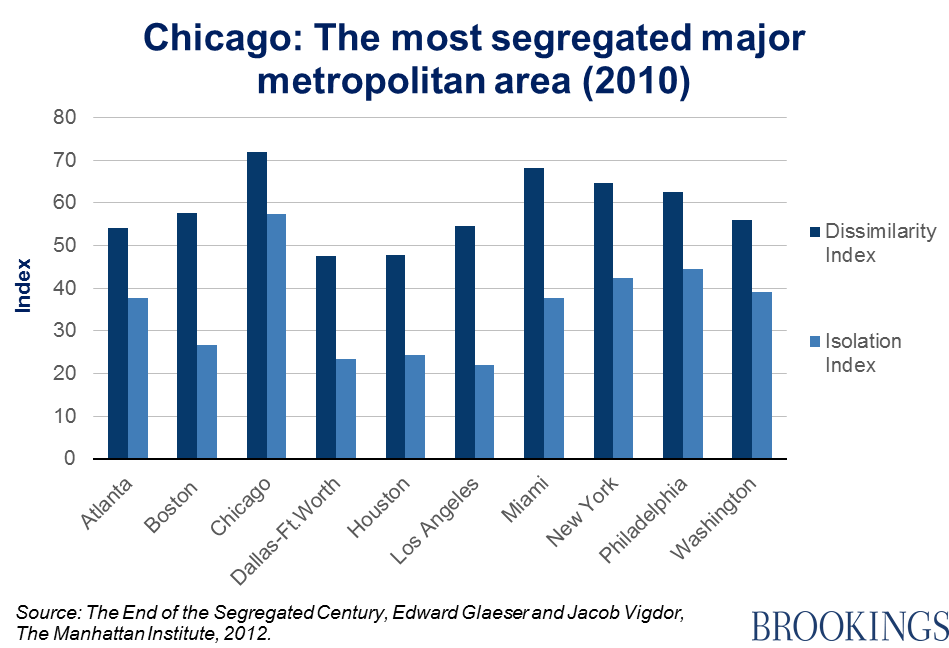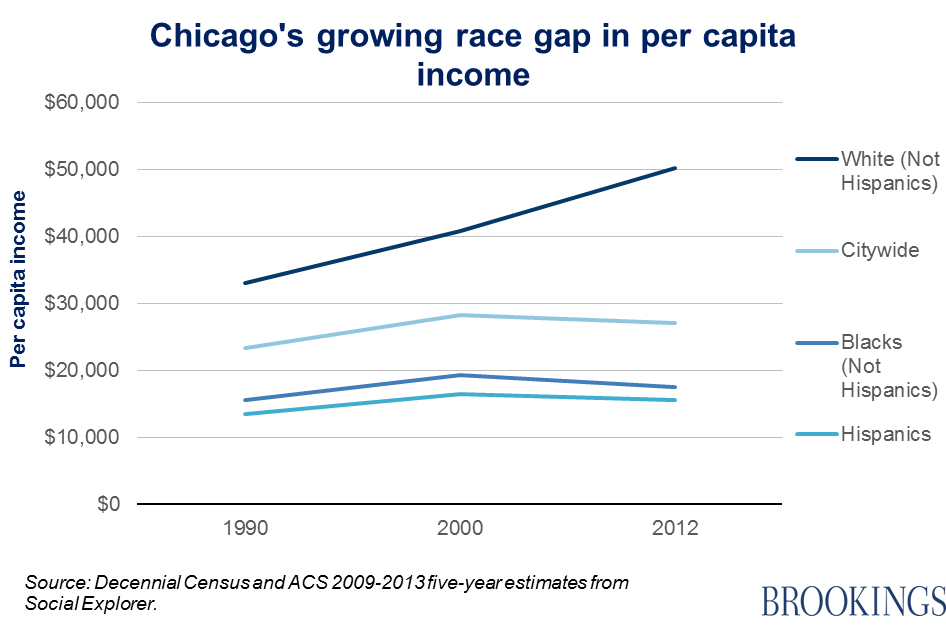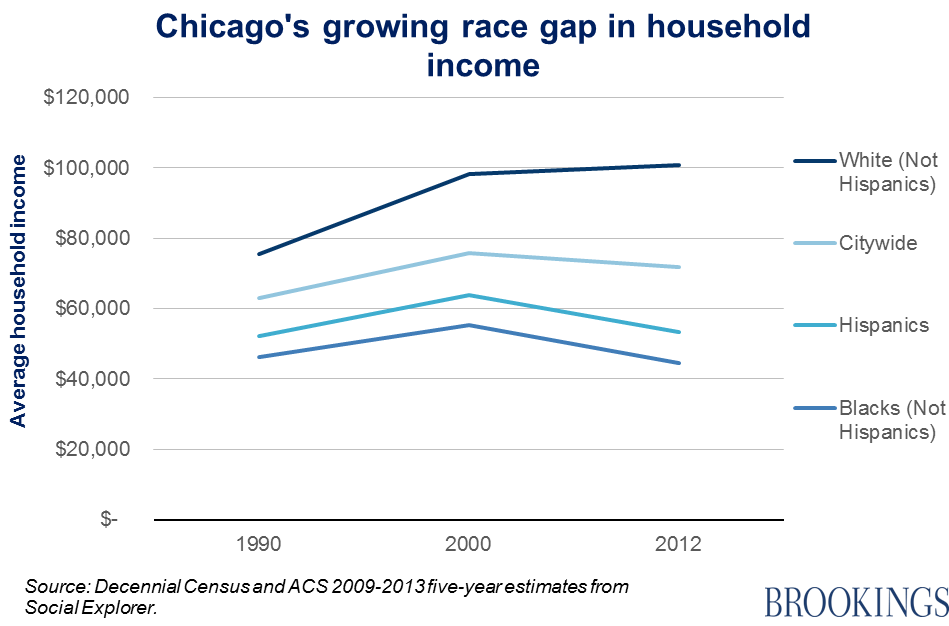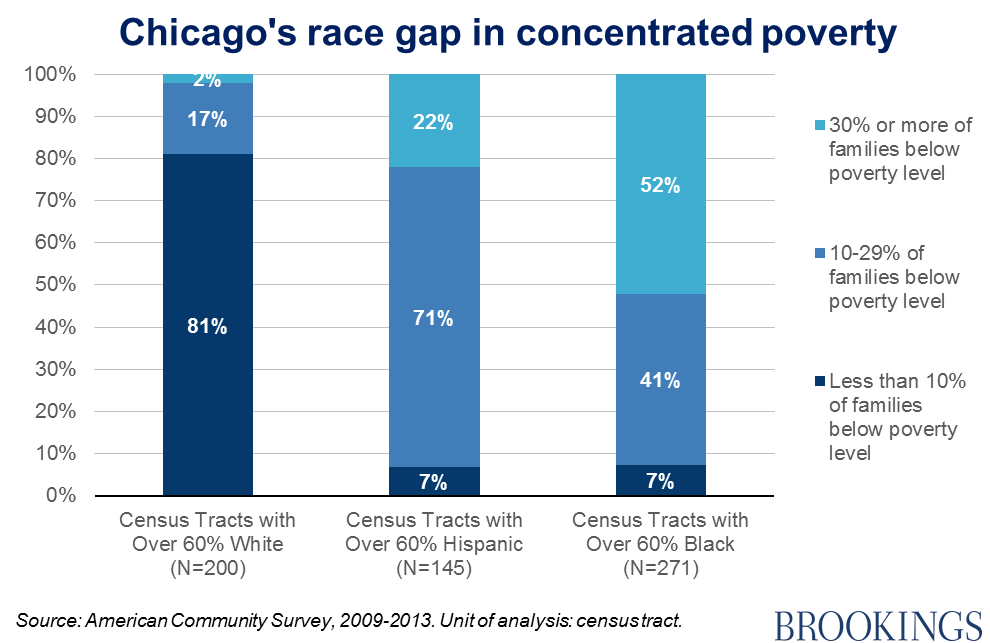Yesterday Baltimore, today Chicago, tomorrow—who knows? The spotlight on race, poverty, and policing is swinging from one American city to the next. But at least more attention is now being paid to entrenched racial inequalities in urban areas.
Chicago, the most segregated metropolitan area
Chicago, where tensions are running high following the release of the video showing the killing of Laquan McDonald, is the most segregated major metropolitan area in the U.S.:
Segregation by race in the U.S. has lessened slightly over the last decade, as shown by our colleague William Frey, but remains high by international standards. One in four black Americans and one in six Hispanics live in high-poverty neighborhoods, compared to just one in thirteen white Americans, according to a recent report by Paul A. Jargowsky for the New Century Foundation.
Only white incomes are rising in the inner city of Chicago
Whites are in the minority in the city of Chicago. But in recent years, they are the only group to see incomes rising: by 52 percent between 1990 and 2012, compared to just 13 percent for blacks and 15 percent for Hispanics. (Note: These figures and all following data are for the inner city of Chicago, rather than Metropolitan Statistical Area.)[1] Strikingly, black and Hispanic city residents have seen a fall in per capita incomes since 2000:
Household income trends show a similar pattern. Black Chicago city households were actually slightly worse off in 2012 than in 1990:
Racial segregation and concentrated neighborhood poverty have a negative impact on children’s life chances, not least because different forms of disadvantage tend to ‘cluster’ spatially. “All three types of segregation—income, educational, and occupational—are associated with one another,” is the conclusion of a report by Richard Florida and Charlotta Mellander.
Concentrated poverty for black and Hispanic Chicagoans
The overlapping of racial and income segregation is clear in the inner city of Chicago. Most majority-white census tracts have fewer than 10 percent of families in poverty, while just over half of the majority-black areas have more than 30 percent of families in poverty:
Surface tension, deep divides
The headlines being generated out of Chicago and other cities are mostly on the narrow issue of police behavior and accountability. But beneath the immediate controversies and anger lie deep racial divides, decades-old, and often the direct result of public policy. The broader tragedy of Baltimore, of Ferguson, of Chicago, is that black and Hispanic Americans in the poorest areas of our cities have such bleak prospects. The danger is that once the media bandwagon has moved on, these structural inequalities will remain. Will things be any better in 2020, or 2030?
[1] These were gathered by looking at the Census Designated Place (CDP) of Chicago City, Illinois over time. Figures for 2012 are ACS 2009-2013 5-year averages. All values are adjusted to 2013 inflation.
The Brookings Institution is committed to quality, independence, and impact.
We are supported by a diverse array of funders. In line with our values and policies, each Brookings publication represents the sole views of its author(s).








Commentary
The most American city: Chicago, race, and inequality
December 21, 2015